How to put firewood in a woodpile and in a woodpile?
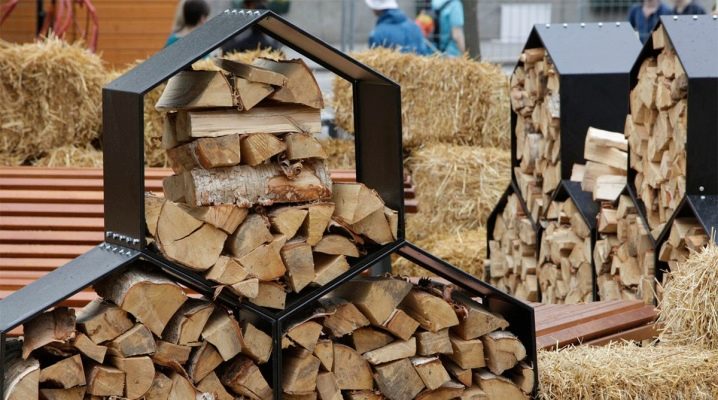
Woodpile - stacked rows of firewood. Stacking firewood in a woodpile helps it dry faster, prevents it from getting wet and saves space. By observing the rules for stacking logs, you will get the best results in these three areas.
There are also safety standards that are important to consider when choosing a place for a woodpile, a method of laying it and methods of operation.


Views
There are several types of woodpiles.
- Wall - a woodpile erected near the wall of a building. One side of it rests against the wall. On the sides there are additional supports - pillars or an adjacent wall, which prevent the firewood from scattering. This type of woodpile assumes the presence of at least three open sides. This is necessary to ventilate the wood.
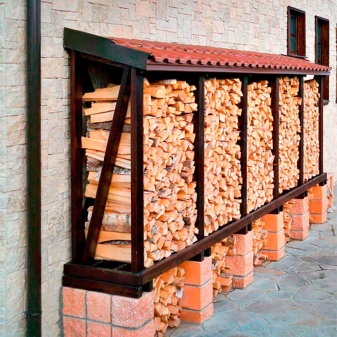
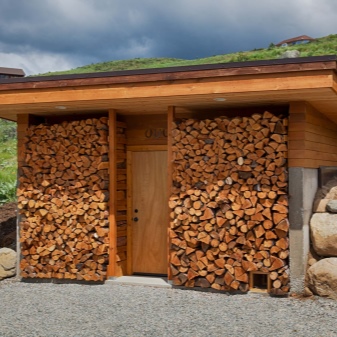
- "Column" - a firebox, which is a round column or a truncated cone, standing with a wide base on the ground. Stows in an open, well-ventilated place.
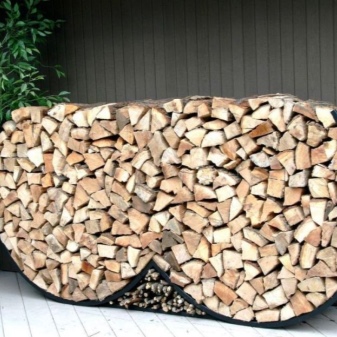
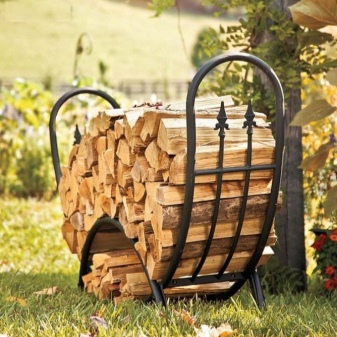
- "House" - chopped logs, laid in the form of a cylinder with a cone in the upper part - the “roof” of the woodpile. In some cases, such laying is done in the form of a truncated cone, standing on the ground with a narrow base.
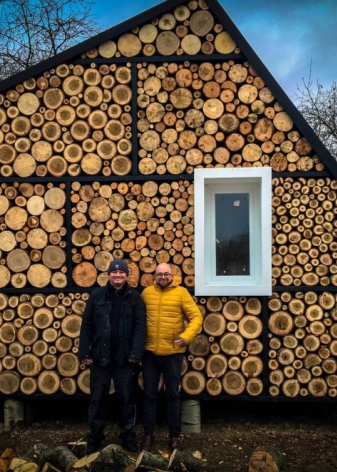
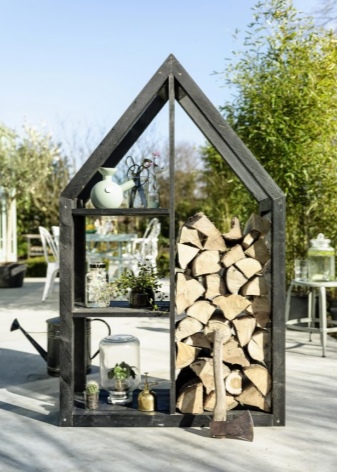
Laying rules
Consider the schemes and rules for stacking each of them.
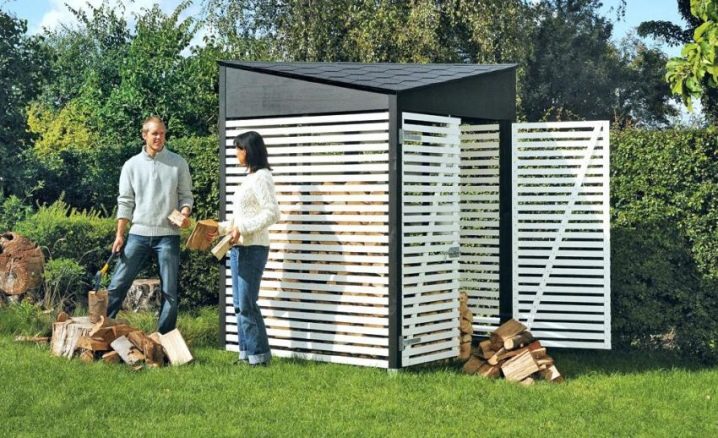
Wall
It is easiest to fold the wall-mounted firebox. It is located in the yard, in the house, in another utility room. The presence of a supporting wall excludes the use of additional dressings during the laying process. It is worth starting from the bottom row, raising the edges first. Logs are placed on the ground / floor perpendicular to the wall. In the first row, the distance between them should be kept increased - about 15-20 cm. This is necessary to ventilate the lower row, which is closer to the ground than others and may be exposed to moisture.
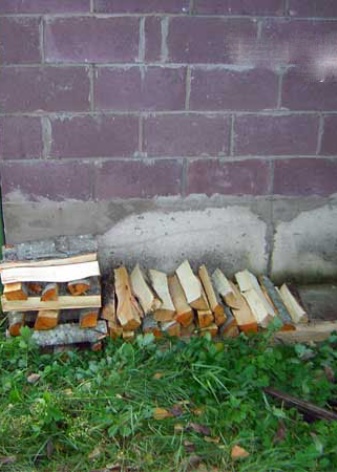
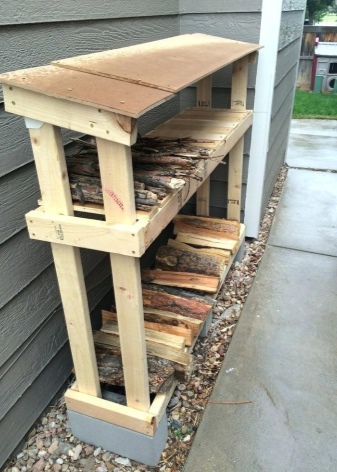
The second row consists of logs arranged in two lines perpendicular to the direction of the first row. The first line consists of thinner logs and is as close to the wall as possible. The second - from the thicker and as far away from it as possible. The extreme firewood of these lines should protrude from the sides of the woodpile by at least 10 cm.
It is important to start stacking the wood correctly from the very beginning. Primary manipulations are designed to create a solid foundation for the woodpile and maintain its integrity throughout the season.
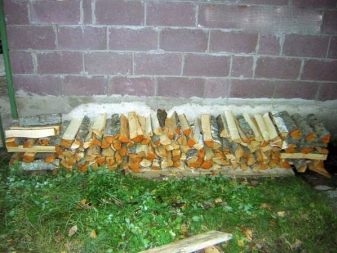
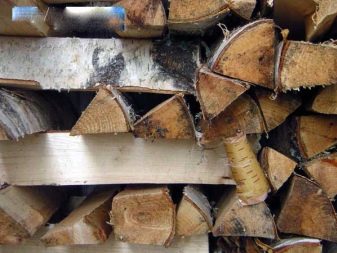
In the process of laying the wall woodpile, you need to ensure that the angle of inclination of the logs does not change in relation to the wall - the firewood should not gradually "fall" from the wall, but, on the contrary, "fall" on it. At the same time, the angle of their inclination towards the wall should not be excessive - this will lead to the squeezing of the middle part of the woodpile outward under the pressure of the upper rows. Every 3-4 rows along the edges, a cage is bandaged - laying the logs parallel to the wall and perpendicular to the previous row.
The side supports can be installed when the height of the wood reaches at least half a meter. To do this, you need to use strong poles that are installed along the edges of the woodpile. Their length should be equal to the estimated height of the future woodpile.
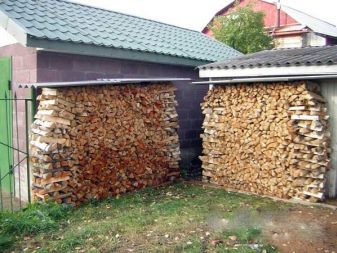
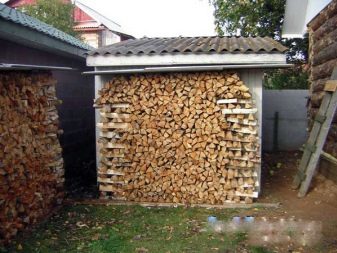
On each edge, the location of the supports is as follows: one closer to the wall, the other to the front side of the firebox. The supporting poles must be connected to each other using strong wire. The best way to bond is crosswise. As a result, the wire will pass along the top row of logs and subsequently remain inside the wood wall.It is worth repeating the wire dressing, with a cage or a well during the entire installation, every 2-3 rows.
The top of the finished woodpile should be covered. You can use short pieces of slate, corrugated board, film or other covering materials. The drain of such a "roof" should be directed away from the retaining wall.
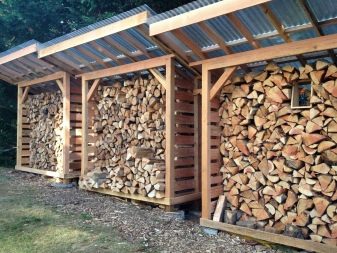
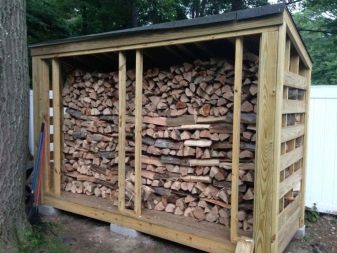
"Column"
The stacking of this type of woodpile starts from the bottom row, laid out in a circle. A peg driven into the center of the circle, a cord tied to it, and a drawing stick are used to mark the even circumference of the base of the future "column". Thus, an even circle is outlined, which is laid by logs. Their location should resemble the rays emanating from the center of the circle.
Laying is done in a spiral, with the transition to a new row after passing the circle. It is important to ensure that the logs are tilted to the center of the circle. This will keep the woodpile from being destroyed. If the wood begins to acquire the opposite angle of inclination, it is worth using a dressing in the form of crossbeams.

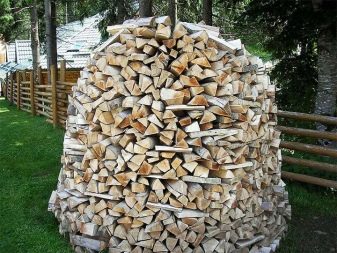
In the upper part of the "column", firewood is brought together in a stack or in a flat area. This configuration of the woodpile requires shelter from the rain. A sturdy film will do. It should close the firebox up to half, and not reach the ground - this will worsen the airing of the firewood.
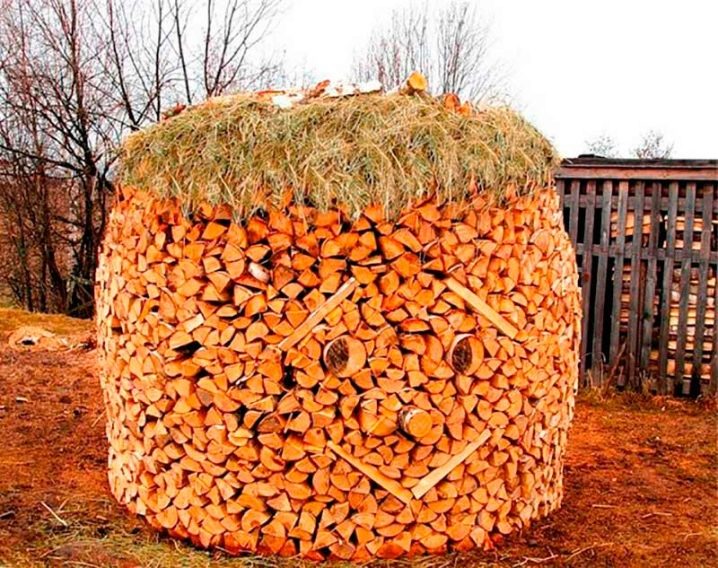
"House"
The stacking of this woodpile is similar to the stacking of the "column". The only differences are that in the upper part of the "house" the "roof" is formed from the logs themselves.
To achieve this effect, it is necessary, as you approach the end of laying, to begin to bring up the logs located in the center of the circle. In this case, an impromptu "roof" will turn out by itself. The final rows of firewood should be stacked tightly to each other. Moisture will drain from the woodpile along them, and the firewood will remain dry.
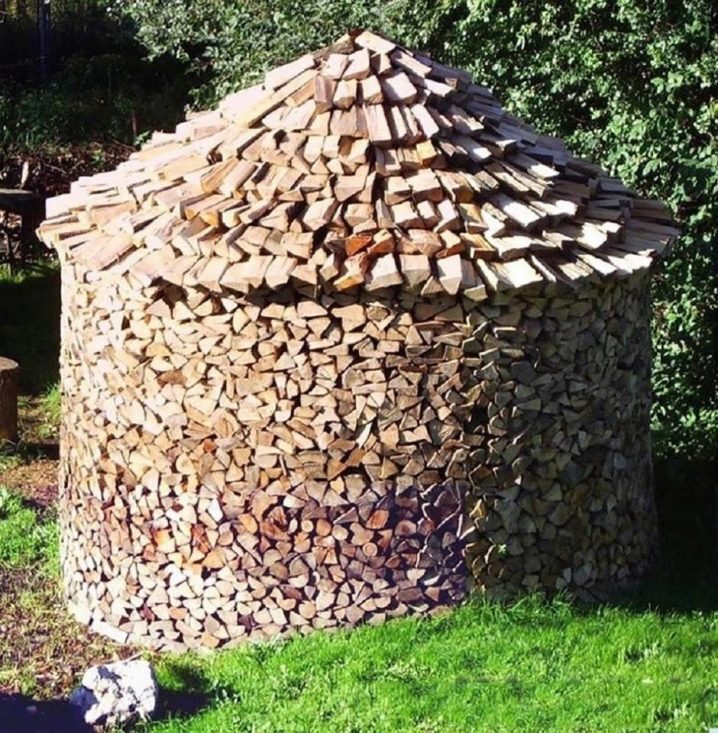
A firebox of this type is not only a good way to store firewood, but also a detail of the design of a dedicated plot of land. Birch firewood, laid with decorative variations, looks especially beautiful.
A common method of strengthening woodpiles is to use netting or wire. They are pulled along the perimeter of the firebox, which is designed to prevent spillage, roll, fall.
In some cases, the use of a net is advisable to protect firewood from theft.
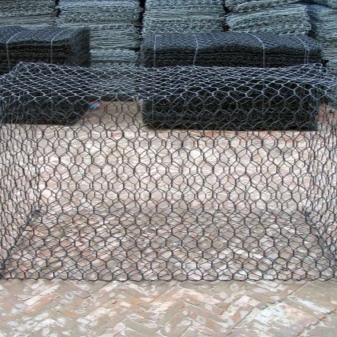

Security measures
It is important to choose the right place for the woodpile. It is better not to place a wall-mounted one against the walls of wooden buildings or living quarters. Firewood is a solid fuel and is considered a fire hazard. It is worth considering the fire factor and its consequences.
Lay the "column" and "house" on a flat piece of land at a sufficient distance from sources of fire and walkways. Avoid creating very tall woodpiles. In the process of seasonal removal of firewood, a collapse may occur, which will harm a person. Even one piece of wood falling from the top row can cause irreparable damage. It is especially worth keeping an eye on the presence of children near the woodpile.

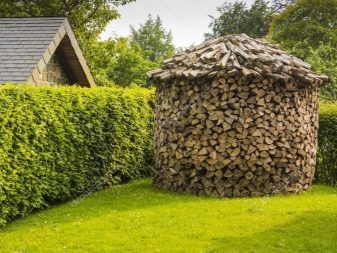
Laying out firewood with the obligatory use of dressing - so that they do not fall during operation.
You need to keep a container with a sufficient amount of water near the firebox, so that in the event of a fire source, you can quickly extinguish it.
For interesting ways to lay out firewood, see the video below.








The comment was sent successfully.